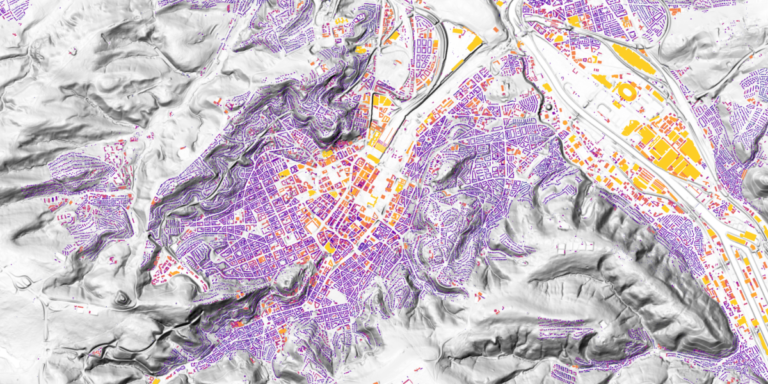The German Aerospace Center (DLR) has created a solar atlas to identify the PV potential on roofs in Germany. This new, open-access online platform uses aerial photographs and geodata processed with machine learning methods to determine the solar energy potential for the country’s entire building stock of approximately 20 million units.
The DLR has developed a new one online open access solar atlas which can help homeowners and solar companies identify locations where PV systems can potentially be hosted in Germany.
The EO solar energy platform uses aerial photographs and geodata to determine the solar energy potential for the entire German building stock of approximately 20 million units.
“For data protection reasons, it is not possible in Germany to map individual buildings on a publicly available website,” the DLR said. “That is why the photovoltaic potential is shown at the municipal, district or federal level.”
“The solar atlas shows how Earth observation can be successfully used for climate protection and sustainable growth of energy generation,” says Kaysser-Pyzalla.
The atlas is based on several terabytes of data from the Earth Observation Center (EOC), including digital, distortion-free aerial photographs with a resolution of 20 cm and high-resolution surface models with a resolution of 1 meter, provided by the Federal Office for Cartography and Geodesy .
The platform calculates the possible electrical power based on the hours of sunshine, the radiation intensity, the roof orientation and the shade of adjacent buildings or vegetation. In addition, an artificial intelligence process identifies rooftops with installed solar panels around the world based on high-resolution remote sensing data.
“In Germany we have included the market master data register. The database contains all registered solar systems on a daily basis,” the DLR said.
EO Solar does not use building models, but digital surface models of terrain, for example generated using aircraft and satellites. These models automatically take into account shade from trees and the surrounding terrain. Furthermore, the process can be extended to countries that do not have construction models.
The DLR said its solar atlas maps the entire country in an up-to-date and systematic way. Existing solar cadastres in the federal states or municipalities are generally not that detailed and only cover certain areas. DLR scientists have already created a similar map for Austria.
This content is copyrighted and may not be reused. If you would like to collaborate with us and reuse some of our content, please contact: editors@pv-magazine.com.


